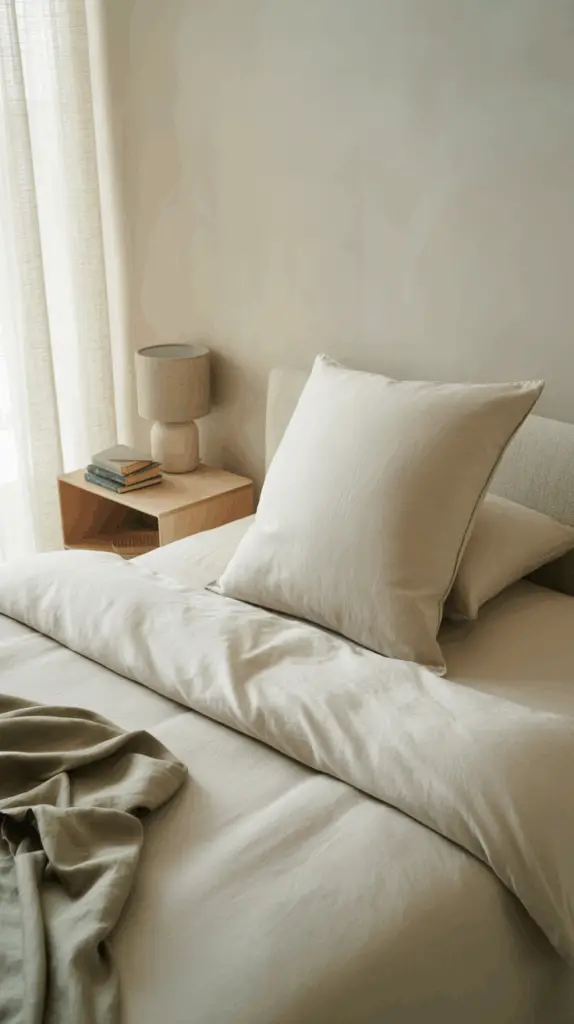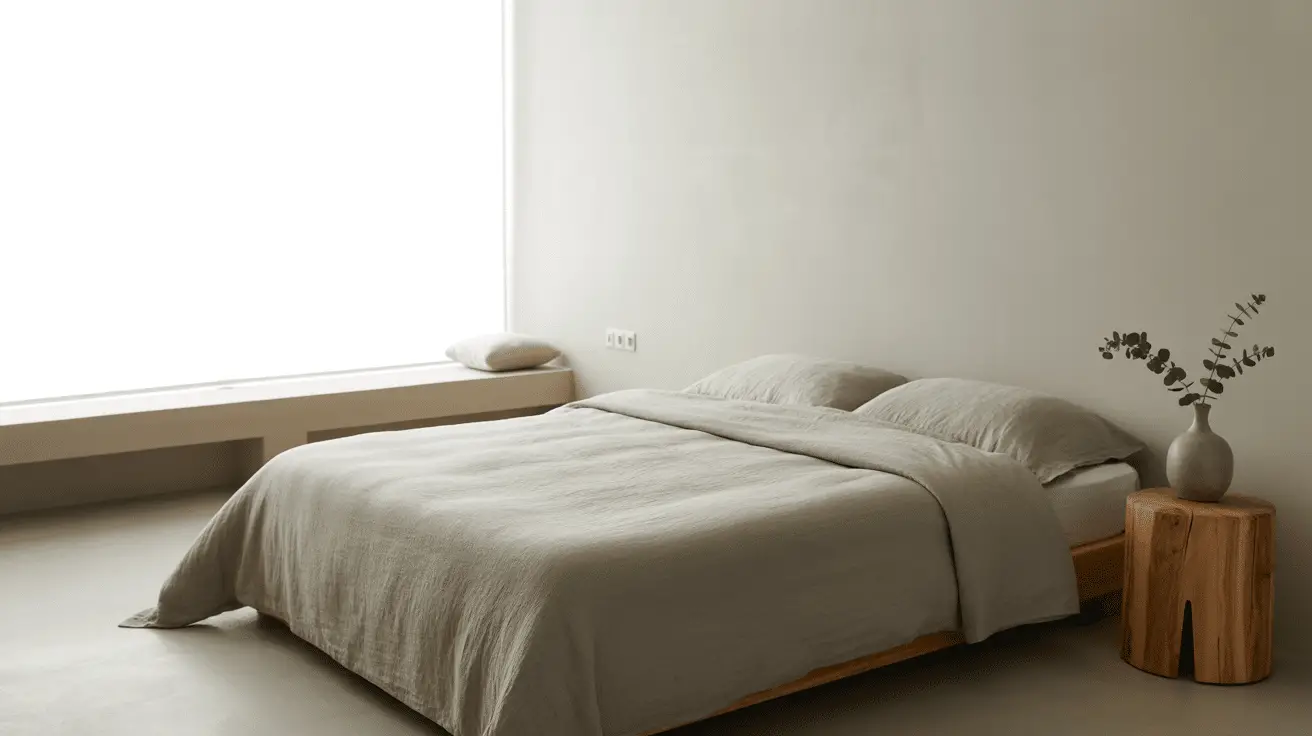Minimalist Bedroom Design Ideas for Serene Homes
Table of Contents
Introduction
Imagine stepping into your bedroom after a long day and instantly feeling your stress dissolve. A study published by the Journal of Environmental Psychology revealed that cluttered environments can increase anxiety and disrupt sleep, while clean, intentional spaces foster calmness and better rest. This is precisely why minimalist design has become such a powerful trend in home décor.
Minimalism in bedrooms isn’t about living with less—it’s about living with only what adds value. By stripping away the excess, homeowners can create serene retreats that function as personal sanctuaries. From carefully chosen color palettes to smart furniture choices, minimalism focuses on harmony, clarity, and balance.
This article explores practical and inspiring minimalist bedroom design ideas that can transform any home into a serene escape. We’ll dive into the essentials of decluttering, the best calming color schemes, functional yet stylish furniture, the magic of lighting, and even how to personalize a minimalist room without overwhelming it. By the end, you’ll have the knowledge and inspiration to create a tranquil bedroom that feels like it belongs in a design magazine yet still reflects your unique lifestyle.
Declutter for Serenity
One of the core principles of minimalist bedroom design is decluttering. When excess items pile up—be it clothing, furniture, or décor—they disrupt the natural flow of the room. A clutter-free bedroom enhances mental clarity and creates the sense of openness associated with serenity.
Start by sorting items into categories: keep, donate, and discard. Evaluate each belonging not only by function but also by whether it contributes to the peaceful atmosphere you want. A minimalist bedroom should contain only the essentials: a bed, functional storage, perhaps a nightstand, and carefully chosen décor.
To maintain clutter-free living, establish daily habits like putting clothes away immediately and limiting decorative pieces. Use hidden storage solutions such as under-bed drawers or sleek built-in closets. This ensures the space remains simple without compromising practicality.
Quick Declutter Checklist
| Step | Action | Purpose |
| 1 | Remove non-essential items | Clears mental and physical clutter |
| 2 | Sort keep/donate/discard piles | Creates structure in decluttering |
| 3 | Invest in hidden storage | Keeps space visually clean |
| 4 | Limit surface décor | Maintains simplicity |
Choosing Calming Color Palettes
Colors play an undeniable role in shaping the mood of a bedroom. Minimalist design often leans toward neutral tones—white, beige, gray, or muted earth shades—that evoke calmness. These colors expand space visually and allow natural light to flow more freely.
Layering shades of the same color can add depth without cluttering the design. For example, pairing a crisp white wall with cream bedding and light oak furniture creates subtle contrasts while maintaining harmony. Accent colors, used sparingly, bring warmth and personality. A muted sage green throw blanket or a soft blush pillow can break monotony without overwhelming minimalism.
Beyond aesthetics, research in color psychology shows that cooler tones like soft gray and pale blue lower heart rate and induce calm, while warmer neutrals create cozy comfort. When planning your palette, consider both emotional impact and visual flow.
Color Palette Guide
| Base Color | Accent Option | Effect |
| White | Beige, soft gray | Clean and airy |
| Pale gray | Sage green, blush | Calm and balanced |
| Warm beige | Charcoal, muted navy | Cozy and sophisticated |

Furniture with Function and Form
Minimalist bedrooms thrive when furniture serves a dual purpose: practicality and aesthetic simplicity. Every piece should be intentional. Oversized dressers or ornate bed frames can overwhelm the space, whereas streamlined designs maintain the minimalist flow.
Consider platform beds with built-in drawers or modular wardrobes that provide ample storage while keeping surfaces clear. Floating nightstands offer functionality without visually crowding the room. Select materials such as natural wood, matte metal, or upholstered textures to balance utility with comfort.
To avoid sterile minimalism, balance clean lines with warmth. For example, a simple oak bed frame paired with a linen headboard feels both functional and inviting. Remember, minimalism isn’t about austerity—it’s about purposeful living.
Functional Furniture Breakdown
| Piece | Ideal Feature | Benefit |
| Platform bed | Built-in storage | Maximizes space |
| Wardrobe | Modular design | Customizable storage |
| Nightstand | Floating style | Airier look |
| Bench | Hidden storage inside | Adds seating + storage |
The Power of Lighting in Minimalist Bedrooms
Lighting is more than illumination—it’s atmosphere. A well-lit minimalist bedroom relies on layers of natural and artificial light to create warmth and flexibility.
Natural light should be maximized wherever possible. Sheer curtains or roller blinds allow sunlight to soften the room, making it feel spacious and inviting. Artificial lighting, meanwhile, should be layered. Overhead lights provide functionality, while bedside lamps or wall sconces add ambiance. Dimmer switches give control over mood, shifting easily from energizing brightness in the morning to soothing glow at night.
Material choice also matters. Linen lampshades, frosted glass, or matte finishes complement the clean aesthetics of a minimalist space. Warm LED bulbs ensure the room avoids a harsh, sterile appearance.
Lighting Layers Table
| Lighting Type | Placement | Effect |
| Natural light | Windows, sheer curtains | Expands and brightens space |
| Ambient light | Overhead ceiling | Functional base lighting |
| Task lighting | Bedside lamps, sconces | Focused use |
| Accent lighting | Hidden strips, dimmable LEDs | Creates warmth |
Incorporating Natural Elements for Warmth
Minimalist bedrooms risk feeling stark if not balanced with warmth. Nature-inspired elements solve this challenge beautifully. Incorporating natural materials such as wood, linen, rattan, and stone adds texture and coziness while aligning with minimalist principles.
For example, a wooden accent wall behind the bed can bring organic warmth without clutter. Linen bedding introduces softness, while a simple jute rug grounds the room. Plants—like snake plants or peace lilies—introduce greenery that purifies air and provides subtle vibrancy.
These elements not only enhance aesthetics but also promote well-being. Studies show that natural materials and biophilic design improve relaxation and sleep quality.
Natural Element Options
| Material | Placement | Benefit |
| Wood | Bed frame, accent wall | Warmth and grounding |
| Linen | Bedding, curtains | Soft and breathable |
| Rattan | Lampshades, baskets | Organic texture |
| Plants | Corners, window ledges | Purifies air |
Personalizing Minimalist Bedrooms Without Clutter
Minimalism doesn’t mean stripping away personality. The key lies in intentional personalization. Rather than filling walls with multiple artworks, opt for one striking piece of abstract art or a serene landscape. Instead of multiple knick-knacks, choose a few meaningful objects—like a handcrafted vase or a framed photograph.
Texture is another form of personalization. Mix smooth surfaces with soft textiles, such as pairing a sleek nightstand with a chunky knit throw. This creates sensory richness without visual chaos.
To avoid undermining minimalism, follow a “one in, one out” rule for decorative additions. When you add something new, remove something old. This prevents accumulation and preserves the sense of openness.
Personalization Ideas Table
| Approach | Example | Result |
| Statement art | Large abstract painting | Adds identity |
| Texture layering | Linen bedding + wool throw | Warmth & depth |
| Meaningful objects | Family photo, artisan vase | Personal touch |
Conclusion
A minimalist bedroom is more than just a design style—it’s a philosophy of living that values serenity, clarity, and purpose. By decluttering thoughtfully, choosing calming palettes, selecting functional furniture, layering lighting, and weaving in natural elements, anyone can create a space that nurtures relaxation. Personal touches ensure that minimalism doesn’t feel impersonal but instead feels deeply authentic.
Ultimately, the minimalist bedroom is about balance: stripping away the unnecessary while amplifying what truly matters. When approached with intention, the result is not only a beautiful room but a sanctuary where body and mind can rest.

